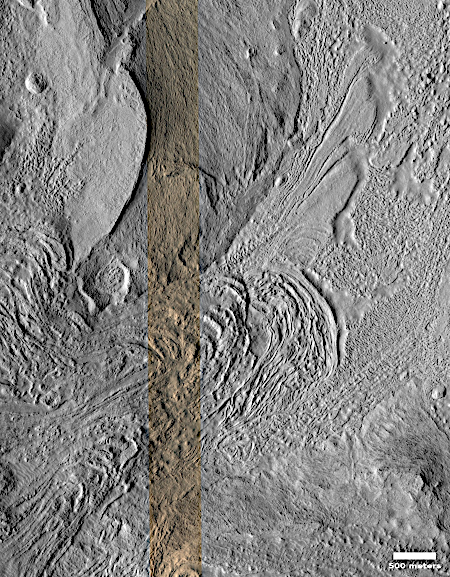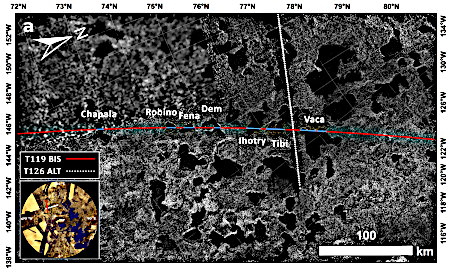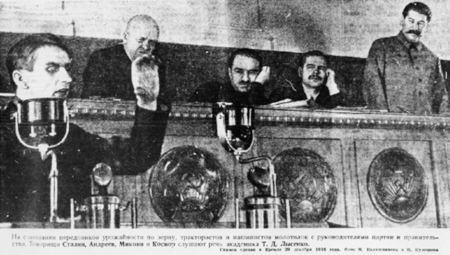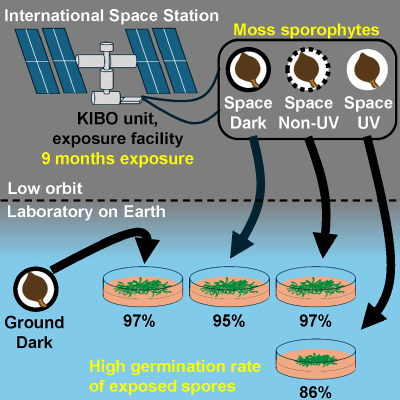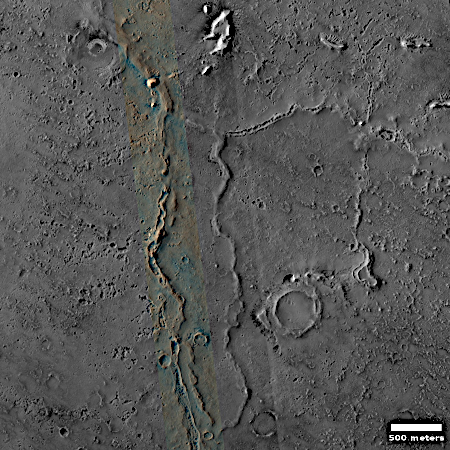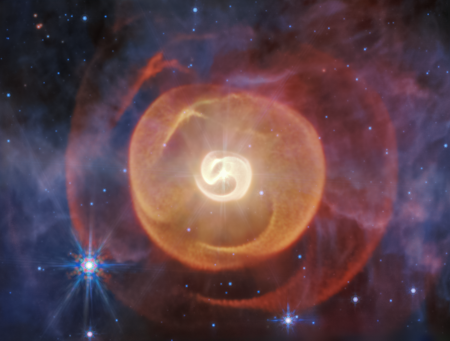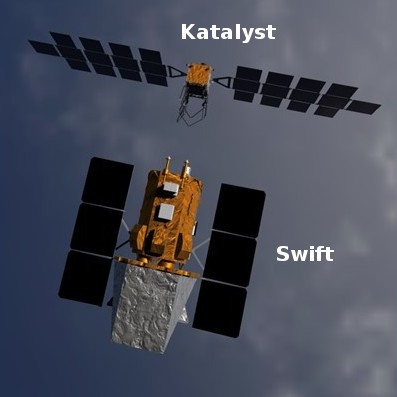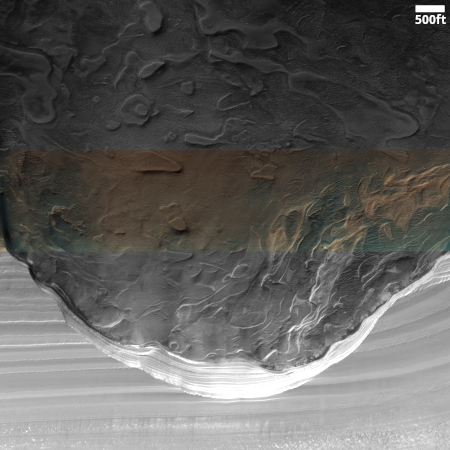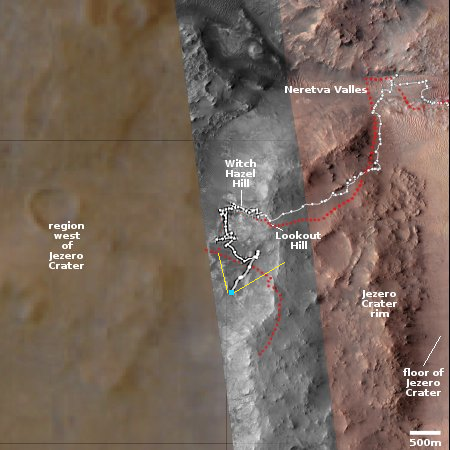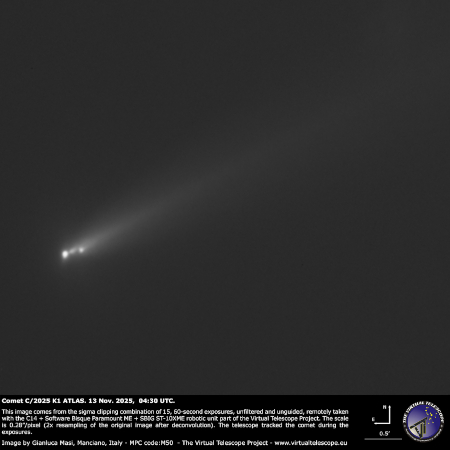More glaciers on Mars
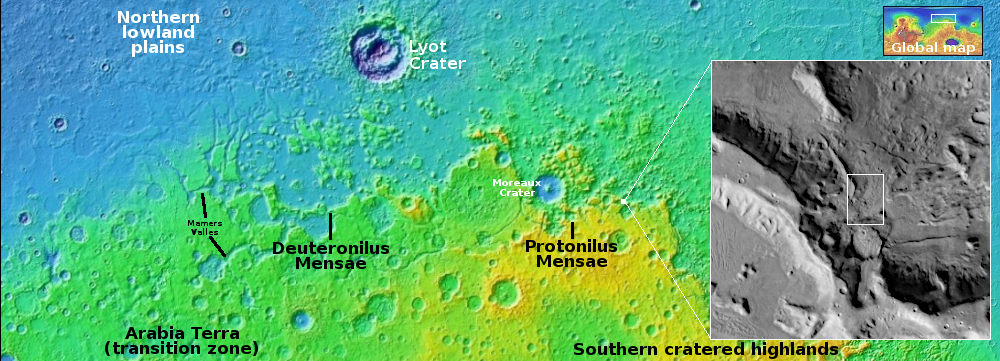
Cool image time! The picture to the right, rotated, cropped, reduced, and sharpened to post here, was taken on September 26, 2025 by the high resolution camera on Mars Reconnaissance Orbiter (MRO).
The scientists label this image “Moraine-like assemblage exposed by ice retreat.” I say: If anyone still doubts the extensive presence of near-surface ice on Mars, this picture should put that doubt to rest.
The white dot on the overview map above marks the location, deep within the 2,000-mile-long strip in the Martian northern mid-latitudes that I label “glacier country,” because practically every picture taken there shows glacial features. This picture is just one more example. As the inset in the overview above shows, this flow is coming down from the exterior rim of an unnamed, partly obscured ancient 17-mile-wide crater, dropping about 7,000 feet from the rim’s peak. This particular section shows the last 3,000 feet of that descent, as the glacier worked its way through a gap in a ridge paralleling that rim.
The image label refers to the flow features that appear to be corroding away. It appears the full data set suggests that corrosion is exposing the material pushed downward by that glacier, what on Earth we call a moraine.

Cool image time! The picture to the right, rotated, cropped, reduced, and sharpened to post here, was taken on September 26, 2025 by the high resolution camera on Mars Reconnaissance Orbiter (MRO).
The scientists label this image “Moraine-like assemblage exposed by ice retreat.” I say: If anyone still doubts the extensive presence of near-surface ice on Mars, this picture should put that doubt to rest.
The white dot on the overview map above marks the location, deep within the 2,000-mile-long strip in the Martian northern mid-latitudes that I label “glacier country,” because practically every picture taken there shows glacial features. This picture is just one more example. As the inset in the overview above shows, this flow is coming down from the exterior rim of an unnamed, partly obscured ancient 17-mile-wide crater, dropping about 7,000 feet from the rim’s peak. This particular section shows the last 3,000 feet of that descent, as the glacier worked its way through a gap in a ridge paralleling that rim.
The image label refers to the flow features that appear to be corroding away. It appears the full data set suggests that corrosion is exposing the material pushed downward by that glacier, what on Earth we call a moraine.

